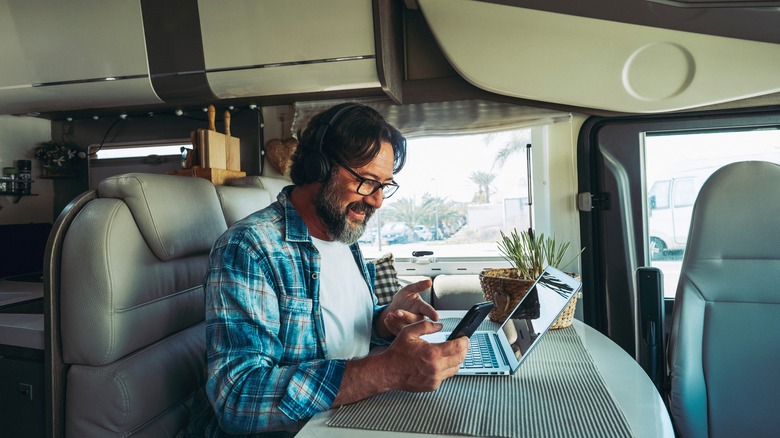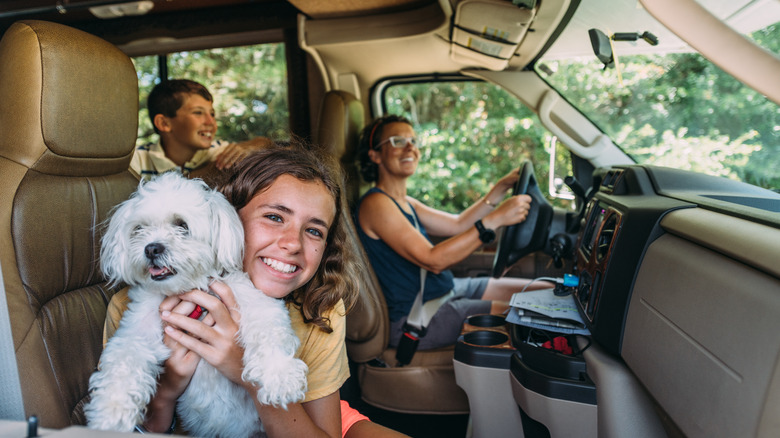Planning Planes, Trains And Automobiles
Camila Pérez B
Summer is in full swing, and temperatures are heating up. As an RV owner, you’re probably dreaming about planning a successful RV trip to escape the routine for a while. While excitement is running high, it also means it’s time to start looking for practical solutions that’ll keep your traveling home cool and comfortable. Luckily, a classic household item can easily transform your RV from a stuffy box on wheels into a cool, private oasis: styrofoam.
Cut to size and taped to the windows, a simple styrofoam can work as an insulator. It reflects the sun’s rays, obstructs the heat’s pathway, and keeps your interior cooler. And with no need for complicated installations or expensive equipment, this brilliant hack shines for its simplicity — but that doesn’t mean you should underestimate its impact! By reducing the heat that gets inside, styrofoam doesn’t just add shade; it can also help you save on air conditioning and be more energy-efficient, especially if the park you’ve chosen charges for electricity.
Plus, it’s also a great way to add a touch of privacy and keep nosy neighbors from peeking inside. This, along with its cool-for-the-summer properties, makes it a must-have when setting up the perfect RV campground this summer.
Upgrading your summer RV experience

simona pilolla 2/Shutterstock
However, styrofoam is just the beginning. There are plenty of other ways to help keep your RV cool, making each trip much more pleasant than the first. On the one hand, if you’re looking for a more long-term solution, specialized RV blinds like the ones by RecPro are a great investment that prevents heat from bringing things inside to a boil. Not only are these blinds great for blocking out UV rays, keeping out excess sunlight, and protecting the interior of your RV, but they also provide much more control over how much light gets in when you need it.
Another essential strategy for staying cool is proper air circulation. To maximize this, consider aligning your rig with the breeze to promote natural airflow or install a rooftop vent fan to circulate and expel hot air actively. Additionally, having a dehumidifier inside your RV can also help to remove excess moisture — which, in turn, will help keep things cool throughout the day.
Another way to ensure your RV doesn’t get too toasty is to replace all incandescent bulbs with LED bulbs. After all, LEDs emit significantly less heat, which means they’ll help reduce the overall temperature of your vehicle. And when the weather is fine, why not take the cooking outside? An outdoor barbeque is the epitome of summer and can prevent heat from building up in such a small space.
The value of keeping cool

Ferrantraite/Getty Images
Whether you’re heading on a long-term RV adventure or an overnight trip, managing heat in your RV isn’t just about comfort — it’s also a matter of health. High temperatures can lead to heat exhaustion, dehydration, respiratory disease, and even death — more so during the blazing summer months. A 2018 study conducted by Arizona State University uncovered just how quickly heat can build up inside a vehicle. Within one hour, researchers found that the average internal temperature of a small car left in the sun could exceed 116 degrees Fahrenheit, with seats reaching a staggering 123 degrees Fahrenheit. Even vehicles parked in the shade registered internal temperatures of around 100 degrees Fahrenheit after just an hour, and these situations could be particularly harmful to vulnerable passengers such as pets, young children, and older adults.
But let’s not forget about your RV’s health, either. High temperatures and sunlight can wreak havoc on your RV’s interior, causing materials to fade, chip, and stain. Even more significantly, the engine can overheat, leading to severe damage that can warp components, cause gaskets to fail, crack the engine block, or severely impact cylinders and pistons, and increase the risk of an engine fire.
At the end of the day, a cool environment contributes to a more enjoyable and relaxing atmosphere. Let’s face it: it’ll be much easier to unwind or get a restful night’s sleep when you’re not battling the heat. And isn’t that what an RV road trip is all about?

